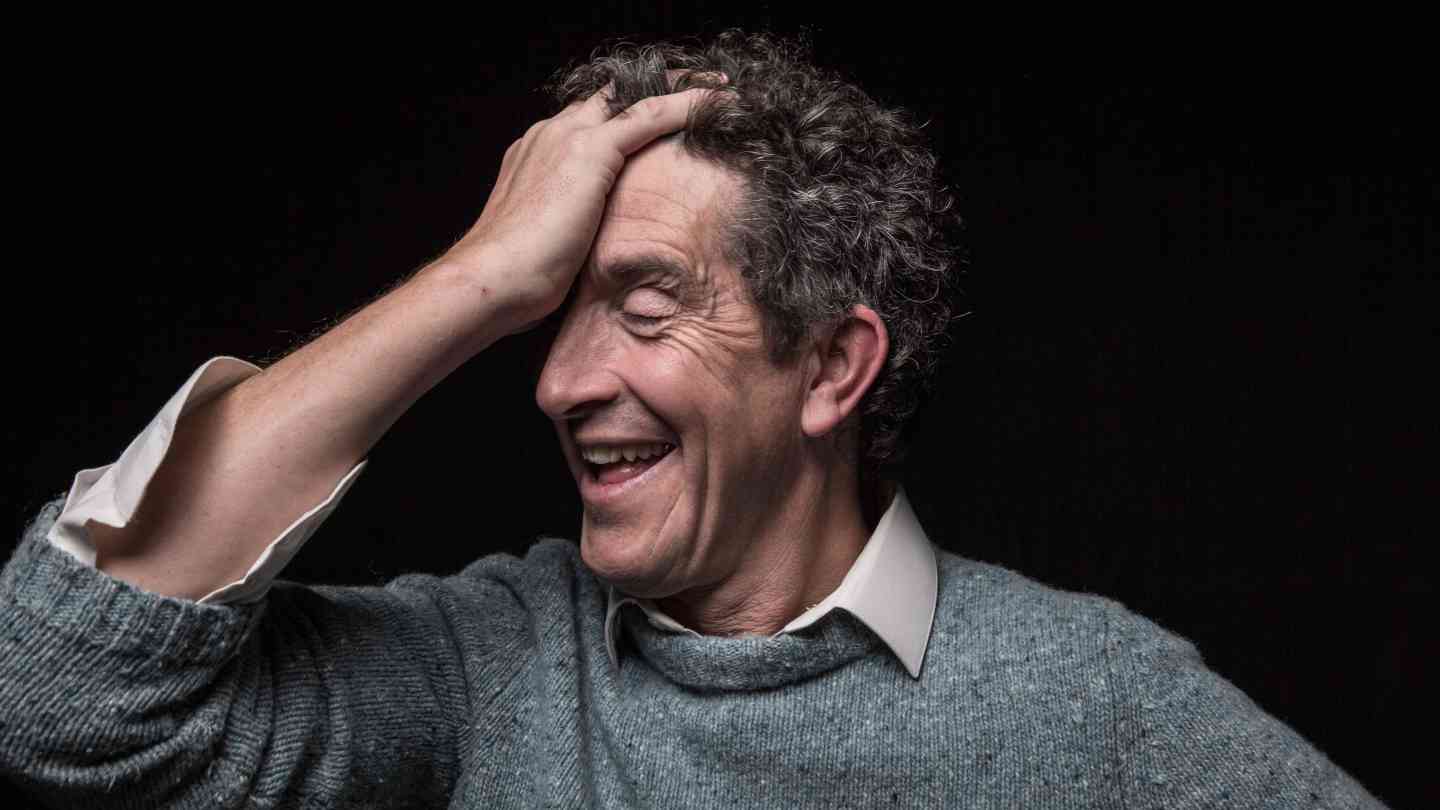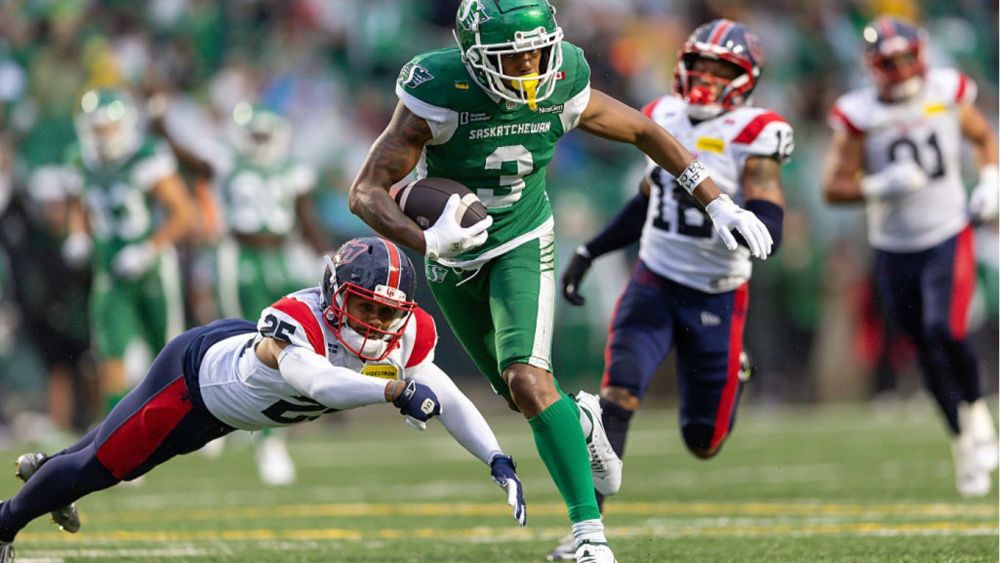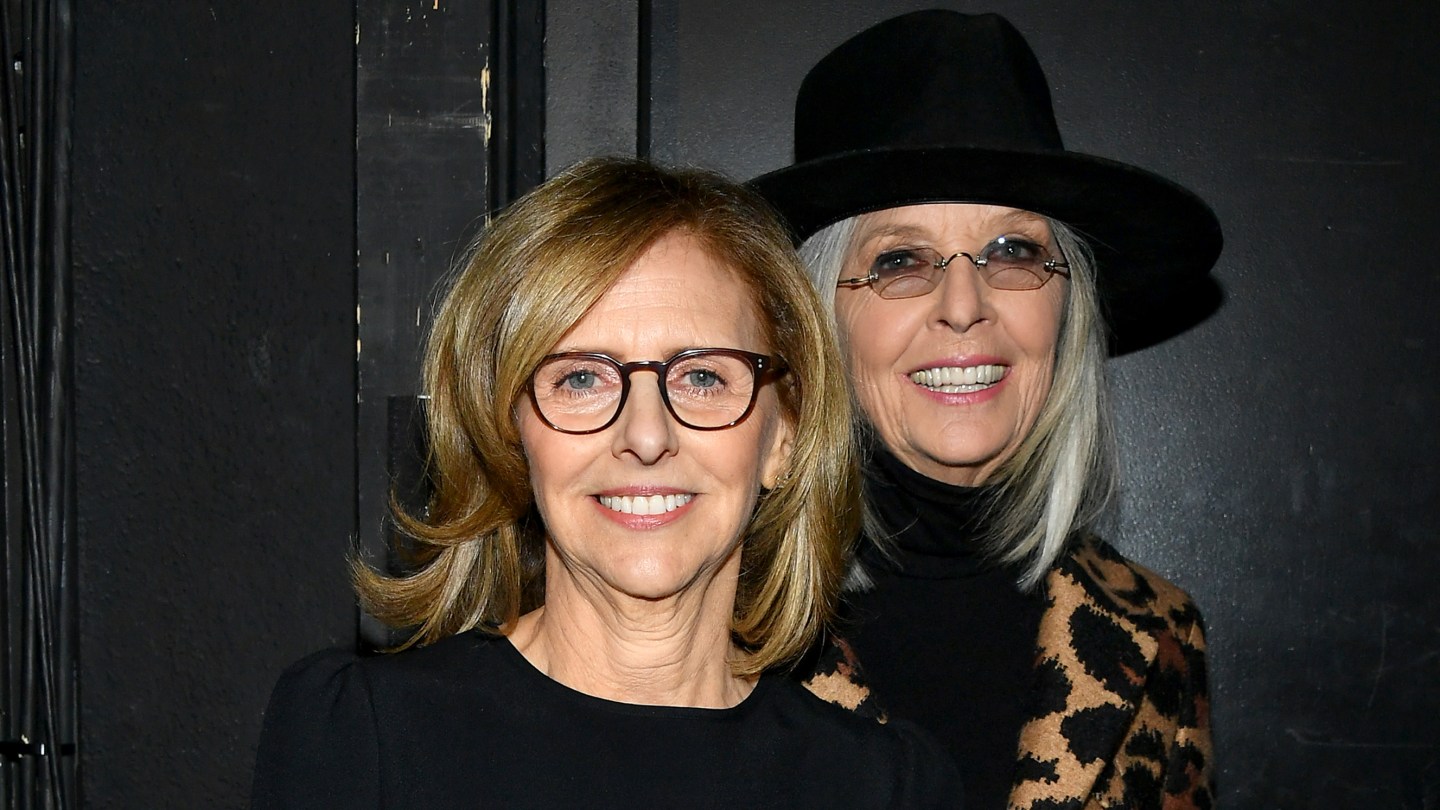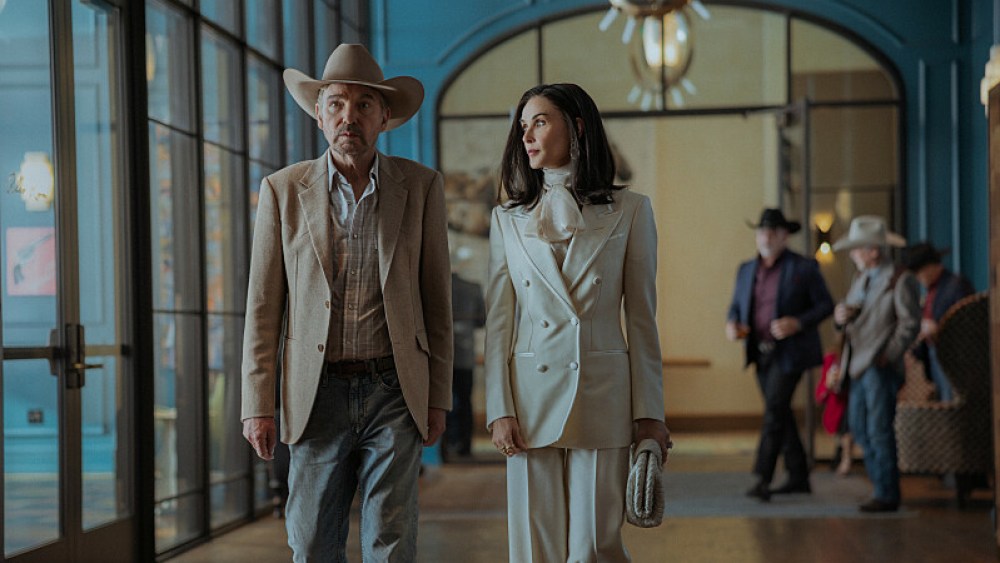Interview with THR Visionary in Cinematography winner Robbie Ryan
Robbie Ryan, the winner of the inaugural THR Visionary in Cinematography Award at this year’s EnergaCamerimage festival, is one of the most inventive, adaptable, and quietly influential DPs working today.
The 55-year-old Irish lenser has built a career defined by radical range: Staring from the raw, handheld urgency of Andrea Arnold — his first major collaborator — to the fixed-tripod, long-lens approach of kitchen sink master Ken Loach, to the wild, rule-breaking experimentation of Yorgos Lanthimos and the actor-centered, classically composed approach of Noah Baumbach.
The throughline isn’t a signature look but a signature philosophy: That the story dictates the style. Ryan has shot on a 4:3 ratio (for Arnold’s Fish Tank) and on VistaVision (Lanthimos’ Bugonia). He’s experimented with Ektachrome stock and tiny 6mm vignetted lenses (on Poor Things). But the goal has never been to show off. “Lens choice isn’t about proving something, but about emphasizing an aspect of the film story,” he notes.
Ryan spoke to The Hollywood Reporter about his beginnings as a Super 8-obsessed kid, the lessons he’s carried from Arnold, Loach, and Lanthimos, and why celluloid remains his creative North Star. “Film has an identity… There’s an alchemy, a magic, to it.”
I’ve read you decided to become a cinematographer when you were 14. Did you already know then you wanted this to be your life’s work?
Well, I certainly didn’t know what a cinematographer was back then. I remember being in a library when I was about 17, and finding a cinematography handbook and thinking, “Oh, that sounds like a good word: Cinematographer.” But at 14/15, I didn’t have an iota of what cinematography was.
I just loved making short films. Me and my cousins and my friends had a Super 8 camera, and we’d just wait for the holidays so we could shoot another short film. It was our way of getting through school, knowing we’d be making some silly movie in the holidays. My brother would write these scripts, and we’d film them. It hasn’t changed much for me in 40 years.
I think in my generation, you see a lot of directors who landed here in the same way, Spike Jones and such. We were all doing the same thing, making mad little movies. It has a bit to do with the technology being more accessible to us than to the generation before. It’s essentially what the TikTokers are doing these days. We were the weirdo kids on the street, hanging around on our bikes and also making movies.
Director Yorgos Lanthimos, cinematographer Robbie Ryan and Emma Stone on the set of ‘Bugonia’
Atsushi Nishijima/Focus Features
Your first major collaboration was with Andrea Arnold on her short film Wasp. How has working with her shaped your approach and your overall career?
It’s fundamental to the way I am. Where I’m at now is through working with Andrea. It was a blessing to have crossed paths and started working and collaborating when we did. She was still doing shorts. It was an important juncture in her career, as well as mine. A junction in our lives, really. We’re fast friends. We’re very close.
Andrea loves telling the story of our first day shooting that short, Wasp. She shoots consecutively, and that first shot is following these little kids, running downstairs backwards. She’s like: I’d like to get the shot where I’m you’re in front of them going down backwards. I was like: Sure, I’ll give it a go. She’s still impressed I was able to do that without falling over. I passed the test of the Andrea Arnold School of Filmmaking.
Her style is really distinct. Like all great directors, she really knows what she likes, and she kind of zones in on that, creates a rule book for herself, even if the rules are there to be broken. I’ve worked with a lot of different directors since then, and I’ve learned that if you can kind of figure out what ingredients each director likes and what they’re hoping to do for this particular film, you can really hook in as a DP.
For example, all of Andrea’s films are very handheld. She hates tripods. Her edit choices within the handheld world are very restrictive to a certain style. She doesn’t make many films; she makes one about every five years. So you’ve forgotten about the system by the time the new one comes around. But if you’d watched them all back to back, you’d see they are similar in a certain way. It’s her film style, which I find totally honest, which is what she is as a person, and why, I think, her films resonate with so many people.

‘Bird,’ directed by Andrea Arnold, shot by Robbie Ryan
Mubi
From Arnold, you started working with Ken Loach, also a realist filmmaker, but with a very different style.
I remember going into an interview with Ken, and he goes: “If you were to film this, us sitting here, what would you do?” I’m like: I don’t know. I had no clue, really. I didn’t know much about Ken’s films, except maybe My Name is Joe, that era, the 90s ones. I was a newbie in the Ken world.
He cut across me and went: “What I do is put a long lens, a 50 mm or 75 mm lens, in the corner over there. I was like: Kind of the complete opposite to Andrea Arnold, but also trying to achieve a kind of realism and doing it extremely well. They are both realist filmmakers, but they come at it from a different way. Ken, if he could, would have the camera in another room. He doesn’t want a camera near his actors to get them distracted.
He doesn’t want lights, but he loves lighting. He loves backlight. Look at his work with Chris Menzies (Kes, Black Jack, The Gamekeeper). It’s so beautiful, so thought through. Ken would go on a recce and would say no to a location if the light wasn’t naturally coming in as backlight. I found that fascinating, because Ken’s films tend to be Northern England and Scotland, which is pretty gray. There’s a 70 percent chance there’s not going to be any light. But if there’s that 30 percent chance there, he’ll get it.

Ken Loach’s ‘I, Daniel Blake’
Courtesy of TIFF
Ken’s approach is really austere, and he is very camera-centric. In a way, Ken and Yorgos (Lanthimos) are quite similar, because they always know what lens they want to use. I remember working on I Am Daniel Blake, and Ken would start a scene on a 75 mm lens, and then he realized that he hadn’t used the 50 mm yet, so we had to re-shoot the whole scene from the beginning. Because he needed to start with the 50 and then move up the ranks.
He’s got a big notebook, where he’s written notes on exactly where the camera will be and what lens he’s going to use. In Ken Loach films, I’m literally the operator, and it’s a joyful place to be, just watching this master choreograph the reality he wants, grasping the honesty and the truth he sees.
He’s usually on a long lens, and what’s great is you’re following the protagonist all the time. So the camera always feels like it’s moving; it never feels static. If you’re on a 100 mm lens following somebody walking around, you feel like a fly on a wall. And because the cameras are way off in the distance, the actors are in the middle of their little world. It’s a technique I never would have wanted to do on my own, but with Ken, I got more and more into it and really enjoy it.
How did you move from Andrea Arnold and Ken Loach to Yorgos Lanthimos, who seems to have a completely different visual style and approach in his films?
We had a couple of meetings and tried to work together on a short film, then on The Killing of a Sacred Deer, but the schedules didn’t work out. Then Yorgos came back and asked: “Would you like to do The Favourite?” And I was weirdly stupid about it. I thought: “You have your own DP (Thimios Bakatakis)”. You’ve got a relationship there. I didn’t want to be, like, the new girlfriend. And I was cautious because The Favourite was a biopic. I don’t like biopics. And it’s about a Queen, royalty. And I hate royal films. I didn’t really know Yorgos’ approach to filmmaking, so I was a little bit reticent, a little bit cautious about signing up to it.
I remember doing prep on The Favourite, and he said, “I don’t want to use any lights.” And I was like: “Yeah, but can that work?” I’ve noticed over the years with Yorgos is if you ask a question, you might get an answer, but if you don’t ask, you’re not going to get much information. So you try and offer up the best you can within what brief you’ve been given.

Emma Stone on the set of ‘The Favourite’ with Robbie Ryan (far right)
Yorgos Lanthimos/Twentieth Century Fox
On the first day of The Favourite, Yorgos came up to me — he had a digital stills camera at the time — and he was taking stills. He’d get the shot he wanted, show me the picture, and say: “We’ll go for this.” I realized he was going to offer up shots and tell me what way we are going to approach it. That’s when I breathed a sigh of relief.
That’s the way we do it all the time now. He sets up the film set with everything at his disposal, where we’re in a room where we can literally shoot 360, without any paraphernalia in the way. We’ve got all the lenses we’ve chosen. We’re on the camera we want to use. We’re on a dolly or whatever camera support system we’re using. And then he’s free to do what he feels is the right thing on that day. He wants to have an element of spontaneity. And I love that. It’s a matter of getting everything ready to go at the last second. His filmmaking is not elaborately complicated. It’s one camera shooting most of the time. There are no crazy techno cranes everywhere. And it’s always on film.
He’ll be sitting there with a handheld monitor, very close to the action. Most of the directors I work with use a small monitor. Ken doesn’t use a monitor at all. All those directors are very close to the action, and I think that’s really important.

Emma Stone and Mark Ruffalo in ‘Poor Things’
Atsushi Nishijima/Searchlight Pictures
What led to the lens experimentation – the wide-angles and fisheyes — on The Favourite and Poor Things?
Yorgos was going through quite a period of curiosity for wide-angle lensing, and we researched. We went to Panavision and researched their wider lenses. We happened upon the 6 mm fisheye when lensing The Favourite, which he loved, and is amazing, and suits that film so well because of the architecture and the fact that Queen Anne (Olivia Colman) is this tiny element within the massive space of her world. I think ironically, the lensing makes her world look very claustrophobic, her very isolated.
Usually, lens choice isn’t about proving something but about emphasizing an aspect of the film’s story. With Poor Things, he wanted to go further, to almost have, like a portal into that world. That vignetted wide-angle lens makes it feel like you’re looking in from another world. That’s one of the times when I felt I actually came up with a good idea.
We went with a 16 mm wide lens, and we used it on a 35 mm format. So essentially, the aspect ratio of the lens wouldn’t cover the whole 35 mm negative. So you had this natural vignette, and at the same time, it’s a very wide angle. That was something we used on Poor Things, and I think it’s used very cleverly.
Anytime a scene felt like it was a little bit lacking, Yorgos would go: “Let’s get the 4 mm out.” And the actors would all be a bit like: “Oh, we haven’t done well enough, we’re going to be sentenced to the 4 mm,” because they’re just tiny in it.
Poor Things is a film that totally leans into that world. It’s kaleidoscopic, very otherworldly. I love the idea of the wide-angle 4 mm, as a portal into that world. But when you use those lenses, everything is in vision, so you’ve got to be on a very simple camera support system. Usually on a tripod or a dolly. The dolly is even in shot on those lenses. So you have a really small footprint for the camera support system. We shot Poor Things very simply, really.

Jesse Plemons and Emma Stone during the production of ‘Bugonia’
Atsushi Nishijima/Focus Features
With Bugonia, you made another jump, to shooting in VistaVision.
When we were filming Poor Things, I remember Yorgos saying he wanted to try out VistaVision. We found a camera and we tested with that. But it was very noisy. Yorgos does not do ADR on his films. He said: “This is a good camera, but I need to be able to shoot sync (sound).” There is a scene in Poor Things where there’s no sync sound, so we used it for that.
I love to think we were one of the first to bring back VistaVision, because nobody else had a big feature film on it at that stage, in 2021. We also shot it on Ektachrome, which was even more of a challenge, using this old camera with a very old stock that we didn’t know much about. But the results were phenomenal.
That planted the seed to try and endeavor to shoot a film on VistaVision. I was doing a bit of research on Poor Things, and I met with this guy called Scott Smith, who’s a large-format technician in Hollywood. He told me about this other camera, the only “sync sound film” VistaVision camera. The Wilcam W11 camera. We wanted to try it out, but it was still getting renovated with the electronics; it wasn’t up to speed.
But about year later, two years later, I did test with that camera. And it was great. We were worried about the noise, but it’s actually quite a quiet camera, relatively, for what it’s doing.
The lens choice on Bugonia is really interesting, because it’s such a large-format camera, but he decided to shoot the majority of the time on faces. The whole film is these portrait shots of faces. It’s a shrewd choice, because the landscape quality of that camera lends itself to the close-up as well. It renders the close-up more beautiful in a way. There’s a fall off to the image that is really special. It elevates the film to another level. Yorgos wanted to go in a different direction, so we went with a large format with a tighter lens.

Robbie Ryan shooting a close-up of Emma Stone on ‘Bugonia’
How do you see the state of film versus digital today?
The majority of the films are digital, obviously. It’s a bit like how a lot of people love Mac and Apple, but Dell and Microsoft are still the majority of computers. I looked at the list of what films have been shot on what this past year, and everybody seems to be shooting on the ARRI Alexa 35. Now it’s purely my opinion, but I think it still doesn’t really get close to what film does, straight out of the can.
Film, even if it’s overexposed, underexposed, or correctly exposed, has a unique quality to it. It’s hard to make digital look horrible, though I have seen a lot of horrible digital stuff, whereas film, if you made a mistake, looks wrong. Though I still find those “film mistakes” really beautiful. For me, film has an identity. It lands with the viewer without them necessarily knowing it was shot on film. There’s an alchemy, a magic, to it.
Ironically, if you shoot on an old chunky format like VistaVision or 70mm or IMAX these days, that creates a big bump in sales for getting people into cinemas. You can charge a little bit more, and you get people interested. I think the work Paul Thomas Anderson did on his film (One Battle After Another) by promoting the way to watch his film in the cinemas was genius. I haven’t been to an opening night of a film for a long, long time that was as exciting as it was to go see the Paul Thomas Anderson film.
Which film felt like the best “dance” between you and your actors?
If we’re talking literally about dancing, it’d be Andrea’s films. She loves dancing. In American Honey, the way Sasha Lane moves was really special. That was one of the rare digital films I’ve done, because we were shooting on the road a lot in America, and shooting on film was just going to be too complicated. We ended up shooting on an Alexa camera, one of the older, chunky Alexas. So I’m bearing down on Sasha all the time, and she never once looked in the camera. She was just brilliant and free and fluid.
Obviously, Yorgos also loves a dance. Every film he does has a dance. Emma (Stone) in Poor Things was really good fun. We had a lot of fun doing the dance in that film.

Robbie Ryan filming Emma Stone’s dance scene in ‘Poor Things’
Atsushi Nishijima/Searchlight Pictures
I also have to think of a static “dance” you shot: The breakup scene in Marriage Story.
Oh my God, yeah. That was amazing. Noah (Baumbach) likes to go through quite a lot of takes. For that scene, it was me, Scarlett Johansson, Adam Driver, and a grip, Jose (Santiago) in a room. That was it. We just went at it. At the end of it, Jose and I are like: “I feel like we’ve been through this breakup as well.” The acting in that is phenomenal, and they really pushed it. I can only imagine where an actor goes. We spent a whole two days filming that scene.
Beyond your own work, were your favorite-shot films of this year?
Scott, I’m so glad you asked me. I go to a lot of film festivals and try to catch up on films before everyone else is talking about them. Ready? I’ll give you five.
There’s The Heart That Remains by Hlynur Pálmason. He made the film Godland. He shoots his own stuff. He’s a bit like an Ingmar Bergman. He lives in Iceland. He shoots all his own films on 35mm.
There’s Motel Destino. I love anything that (cinematographer) Hélène Louvart does. That woman is the most prolific DP of our time. She shoots at least 3-4 films a year, and they’re all superb. Motel Destino is another way-out-there movie. It’s neo-noir Brazil, and it’s just no bullshit; it just goes for it.
There’s a film I saw, which I thought was great, called To the West, in Zapata. It’s a film shot by a guy on his own (David Bim). It’s an ethnographic movie, shot on a Sony FX6, or whatever it’s called, and he just follows this couple in Cuba during COVID, and it’s black and white. It’s about this guy who hunts alligators to sell the meat or something.
And there’s a shot in it that’s like 20 minutes long of this guy getting an alligator, but the camera guy is in the water as well. I’m watching that, going “Fair fucking dues to you. There are alligators in those waters, and you’ve not moved the camera for 20 minutes.”

(L to R): Scarlett Johansson, Robbie Ryan and Noah Baumbach on the set of ‘Marriage Story’
Netflix
Of course, there’s One Battle After Another, which is phenomenal, absolutely inspiring. He’s a very Zeitgeist director. He knows what he’s doing.
And the other film I loved this year was Mark Jenkin’s Rose of Nevada. All shot on a Bolex and it looks amazing!
What advice would you give to young cinematographers starting out today?
I get this one a lot. I think: Just be enthusiastic. Always be filming. Don’t try and second second-guess what your path will be to get you to where you want to go. Just try and enjoy the work and try and meet with like-minded people.
That’s why I think colleges are so important, because you’re kind of immersed with a group of people all doing this for the first time, all learning together. You’ll bump into people and can bounce ideas off each other, and maybe start a collaboration. It’s a collaborative art form.
I still think film school was so fundamental for me. I was never a cinephile at all. I didn’t really watch films. I just loved making them. So I don’t think you need to know anything about other films. Just be instinctive and enjoy the process.
The fact that AI is coming along and might take away the most fun bit of filmmaking, which is being on a film set, makes me very sad. My advice would be: Make sure you’re out there shooting stuff and just having a laugh. It’s an enjoyable thing to do in life. That’s why I’m still doing it at my age.
Share this content:




Publicar comentário